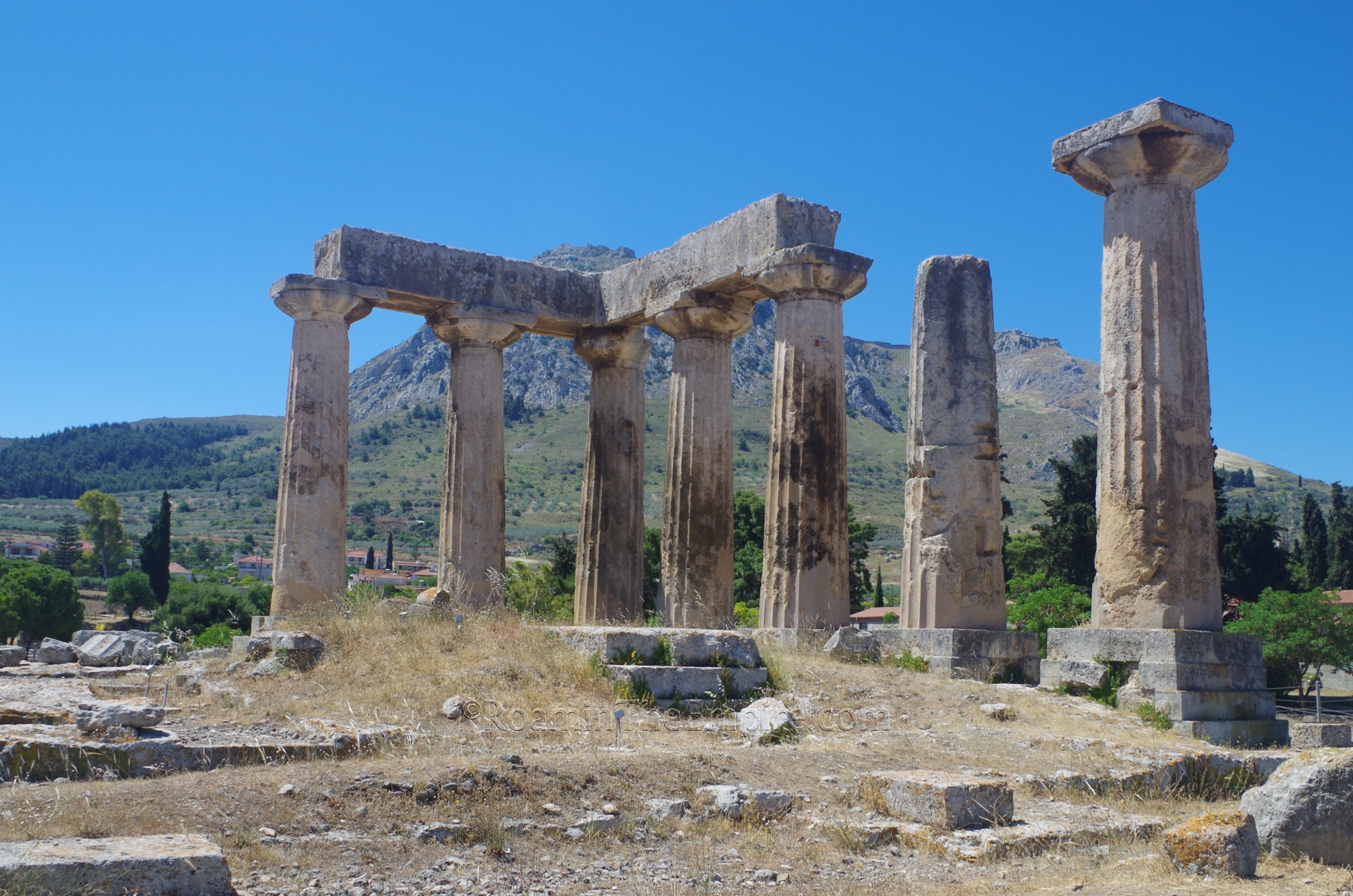
Most Recent Visit: May 2021
The history of Corinth, one of the more high profile ancient settlements in Greece, is, of course, quite extensive. As such, covering the entire history of Corinth in the sort of depth that I usually do for sites would likely take up a whole post or more. So, I’ve decided to focus primarily on the Roman and immediately pre-Roman history of the city, something I’ll likely end up doing for a few sites on this itinerary (I’m looking at you, Athens).
Following the death of Alexander the Great, many of the cities of Greece remained under the control of his successors, and in particular, Corinth was under the rule of Antigonid Macedonia. Corinth was briefly ‘liberated’ by Ptolemy I of Egypt in 308 BCE, but was quickly recaptured a few years later in 304 BCE. At that time the city was put under the management of one, Craterus, perhaps the son of Alexander the Great’s general of the same name. Craterus’ was succeeded by his son, Alexander of Corinth, who in 253 BCE broke from the Antigonid’s and proclaimed himself an independent tyrant of Corinth. Alexander was killed a few years later in 247 BCE, and Corinth remained outside of Macedonian control for a few years beyond that before being recaptured in 245 BCE.
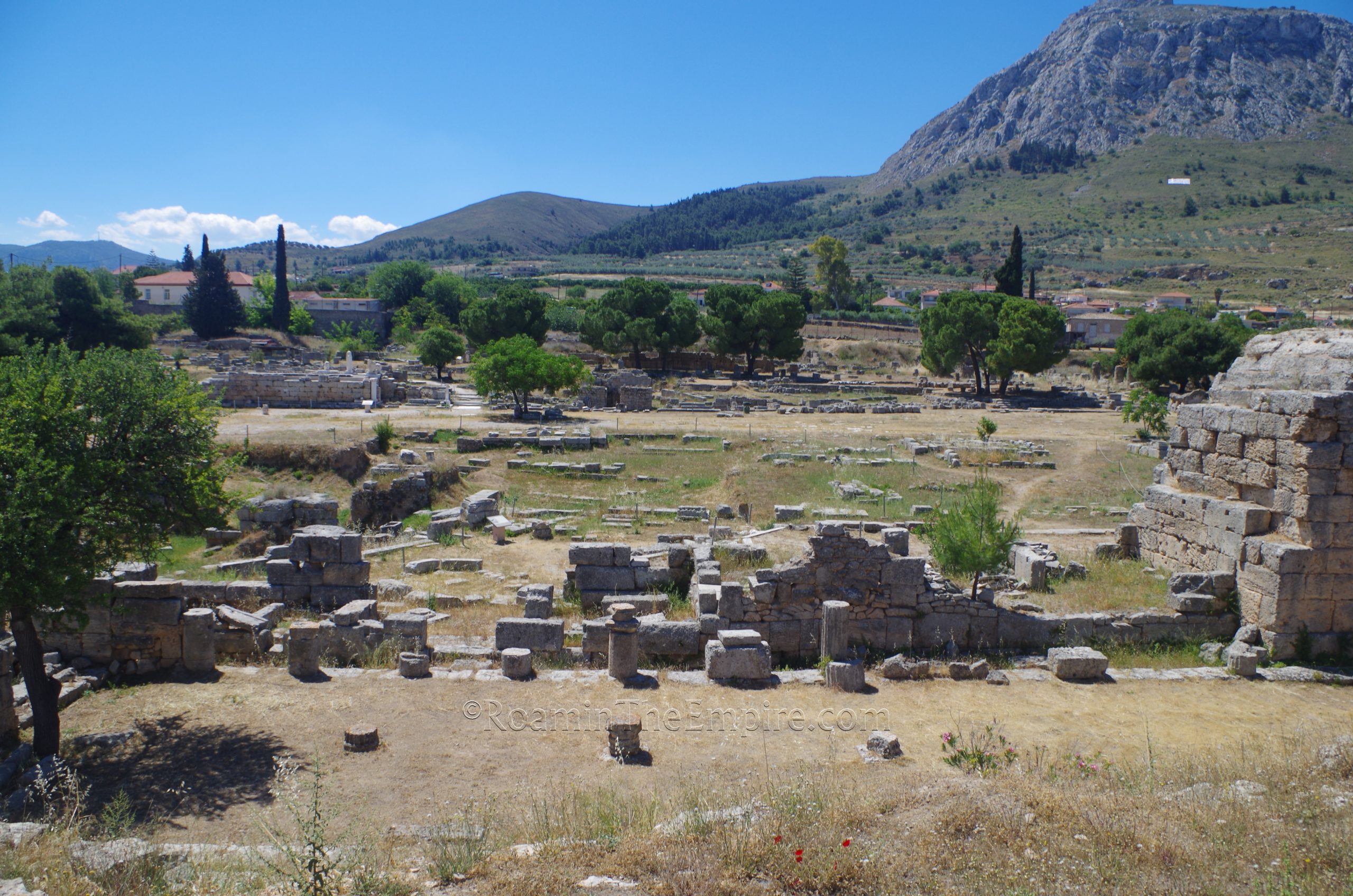
Meanwhile the Achaean League had reformed (with the support of the Ptolemies) among some cities in the southern area of mainland Greece in order oppose the Macedonian hegemony. After overthrowing the Antigonid allied tyrant in his own city of Sicyon, Aratus of Sicyon liberated Corinth from the Macedonians in 243 BCE. Corinth allowed the Achaean League to effectively control land access to the Peloponnese won the League more support on the peninsula; forcing the Macedonians into peace in 240 BCE.
The Achaean League soon found itself in conflict with Sparta and the Aetolian League, though, which necessitated an alliance with Macedonia in 224 BCE, which would subsequently lead to the re-establishment of Macedonian control in Corinth in return for their aid. During the Second Macedonian War between Rome and Macedon, Corinth was besieged by the Romans in 198 BCE. Though the Achaean League was still technically allied with Macedon, the Romans lured their support with the promise of restoring Corinth to the League. Though the Achaean support did not result in the capture of Corinth as hoped, nor did it result in an immediate treaty, the war only lasted another year before the Macedonians made peace in 197 BCE and Corinth was returned to the Achaean League.
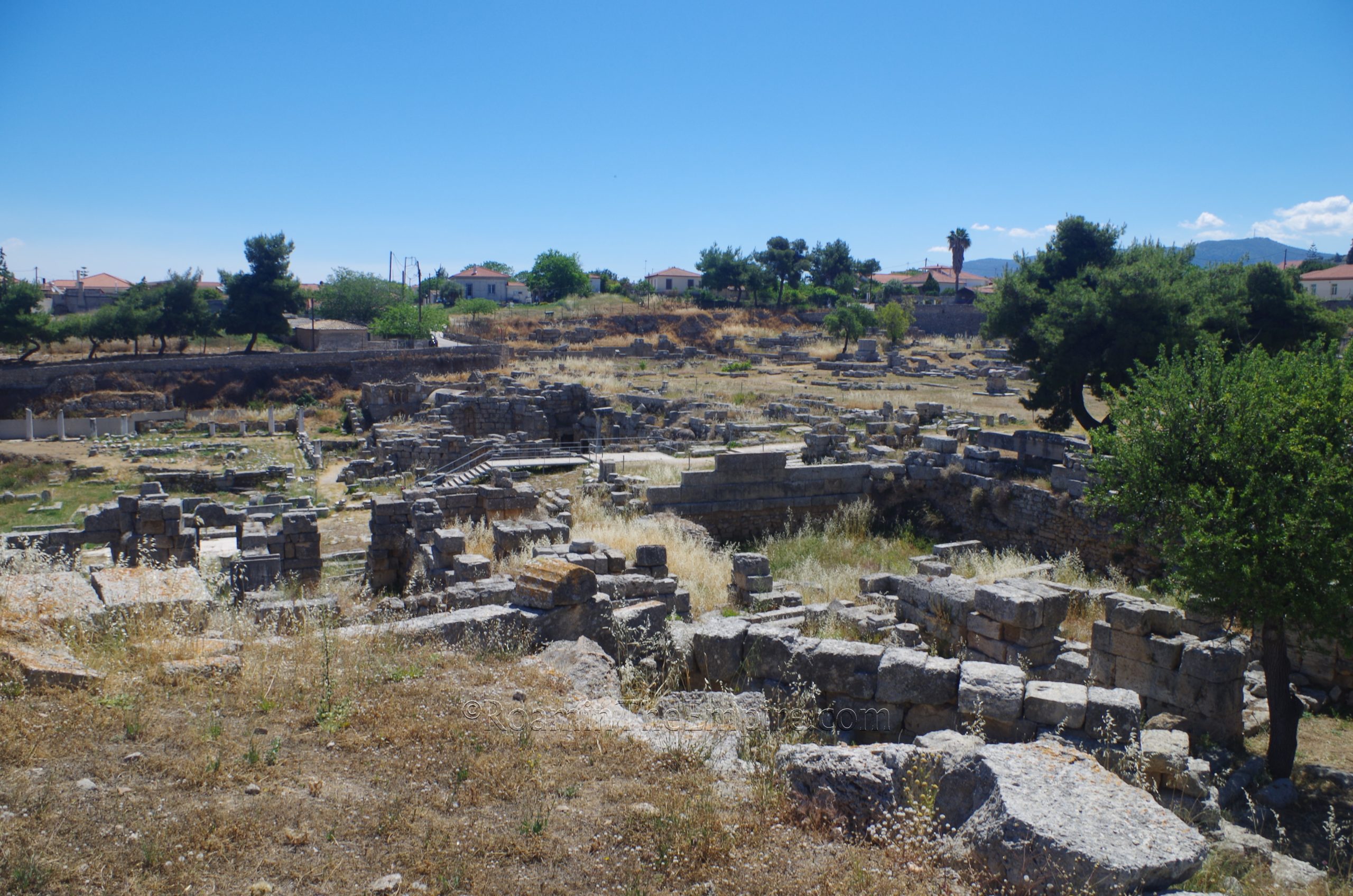
Corinth became a leading city in the Achaean League as the whole of the Peloponnese was brought under the control of the League with Corinth effectively becoming the center of power. Sparta, previously an ally of Rome, had been brought into the Achaean League by force in 192 BCE, but continued to conflict with the League in the following years. Sympathetic to Sparta, the Romans continually intervened, politically, on behalf of the Spartans, souring relations between the Acheaen League and Rome. When Rome once again was at war with Macedonia in 171 BCE, the Achaean League considered supporting the Macedonians, leading the Romans to take hostages (including the writer Polybius) to ensure the loyalty of the Achaeans.
Relations continued to deteriorate between the Romans and the Achaeans as the Romans attempted to dismantle the League, culminating in a war between the two in 146 BCE. Rome dispatched two armies to Greece under the command of the consul Lucius Mummius and praetor Quintus Caecilius Metellus Macedonicus, who had just recently earned his agnomen for defeating Macedon in the recently concluded Fourth Macedonian War. The brief war culminated in a battle outside Corinth in which the soundly outnumbered Achaeans were decisively defeated by the Romans. The Romans waited three days before entering the city, but once they did, they massacred the entire remaining male population and selling all the women and children into slavery. The city was sacked and largely destroyed, meeting the same symbolic fate as Carthage earlier that year for being the center of resistance to the rule of Rome. Lucius Mummius would earn the agnomen Achaicus for his victory over the Achaean League at Corinth and effectively bringing Greece into the Roman hegemony.
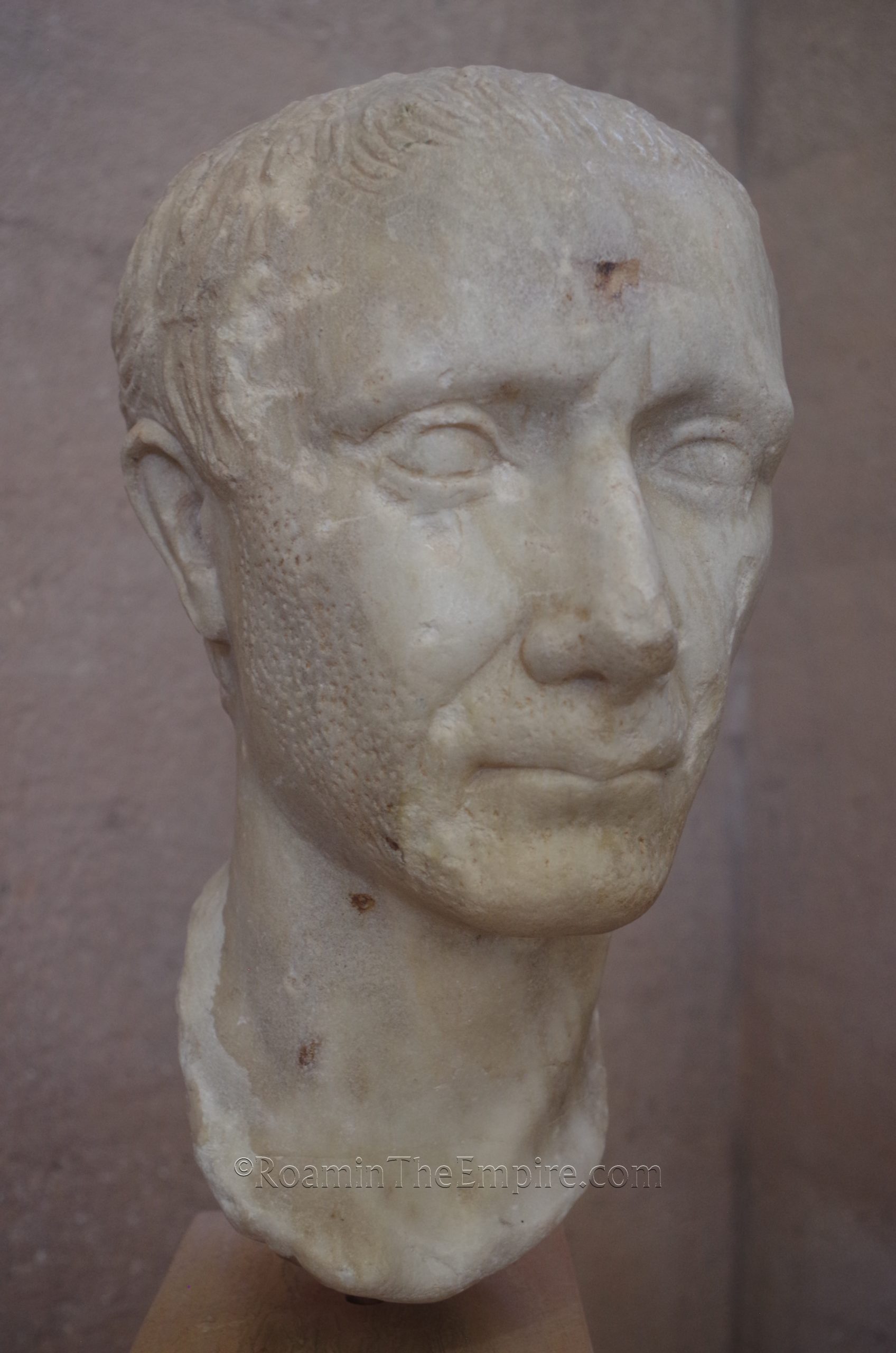
Corinth would remain largely abandoned and used for farmland for over 100 years, until Julius Caesar established a new colony, Colonia Laus Julia Corinthiensis in 44 BCE, as he did with the other city destroyed in 146 BCE; Carthage. Initially, Corinth fell under the management of the province of Macedonia, and later under Acheae following Augustus’ reorganization in 27 BCE. During the civil war between Octavian and Marc Antony, Corinth was an important strategic and logistical center for Antony until it was captured by Marcus Agrippa in 31 BCE. Under Augustus, building programs were undertaken in Corinth and the city began to flourish. Nero made an unsuccessful attempt to dig a canal through Corinthian Isthmus in 67 CE. An earthquake in 77 CE heavily damaged the city, and in return for aid provided by Vespasian in the wake of the disaster, the citizens renamed their city Colonia Julia Flavia Augusta Corinthiensis. The aid resulted in a much revitalized city that flourished from the remainder of the 1st and through the 2nd century CE.
Despite sacking Athens in 267 CE, the Herulians seem to have left Corinth largely untouched and she avoided the fate of her neighbor to the north. By the fourth century CE, the city was described as the largest and most wealthy city in all of Greece, but was shortly after devastated by a pair of earthquakes in 365 CE and 375 CE. If that were not enough, it was sacked by Alaric in 395 CE. The city was rebuilt following these disasters, but on a much smaller scale.
Getting There: Corinth isn’t terribly far from Athens. My first trip to Corinth, I took the train from Athens, which takes about an hour and there are hourly departures for most of the day. The price is about 8.50 Euro each way. The train lets off north of the modern city but not quite near to the ancient city, though, and so one must then take a local bus from the train station to the ancient city, which in the summer is fairly easy. An intercity bus runs from Athens to the modern Corinth, and again, a bus into the ancient city is necessary, but this is perhaps an easier route than the bus from the train station. And in all honesty, I found the train and bus websites difficult to navigate and get reliable information, so I’d almost recommend just figure that information out at the station. The other alternative, is, of course, driving, which is what I did for the most recent visit. It’s about an hour drive from Athens and offers a lot more flexibility to see some of the other sites in the vicinity of Corinth.
The core of the remains of ancient Corinth is located within an archaeological park located at Argous 105, Archea Korinthos. An on-site museum is also located here. In the winter (November 1 to April 10), the site is open every day from 8:00 to 15:00. In the summer (April 11 to September 30) the site and museum are open every day from 8:00 to 20:00. October, for some reason is some sort of buffer month that draws down the opening times to the winter levels, with the first half of the month being from 8:00 to 19:00 and the latter half 8:00 to 18:00. Admission to both the museum and the archaeological site is 8 Euros.
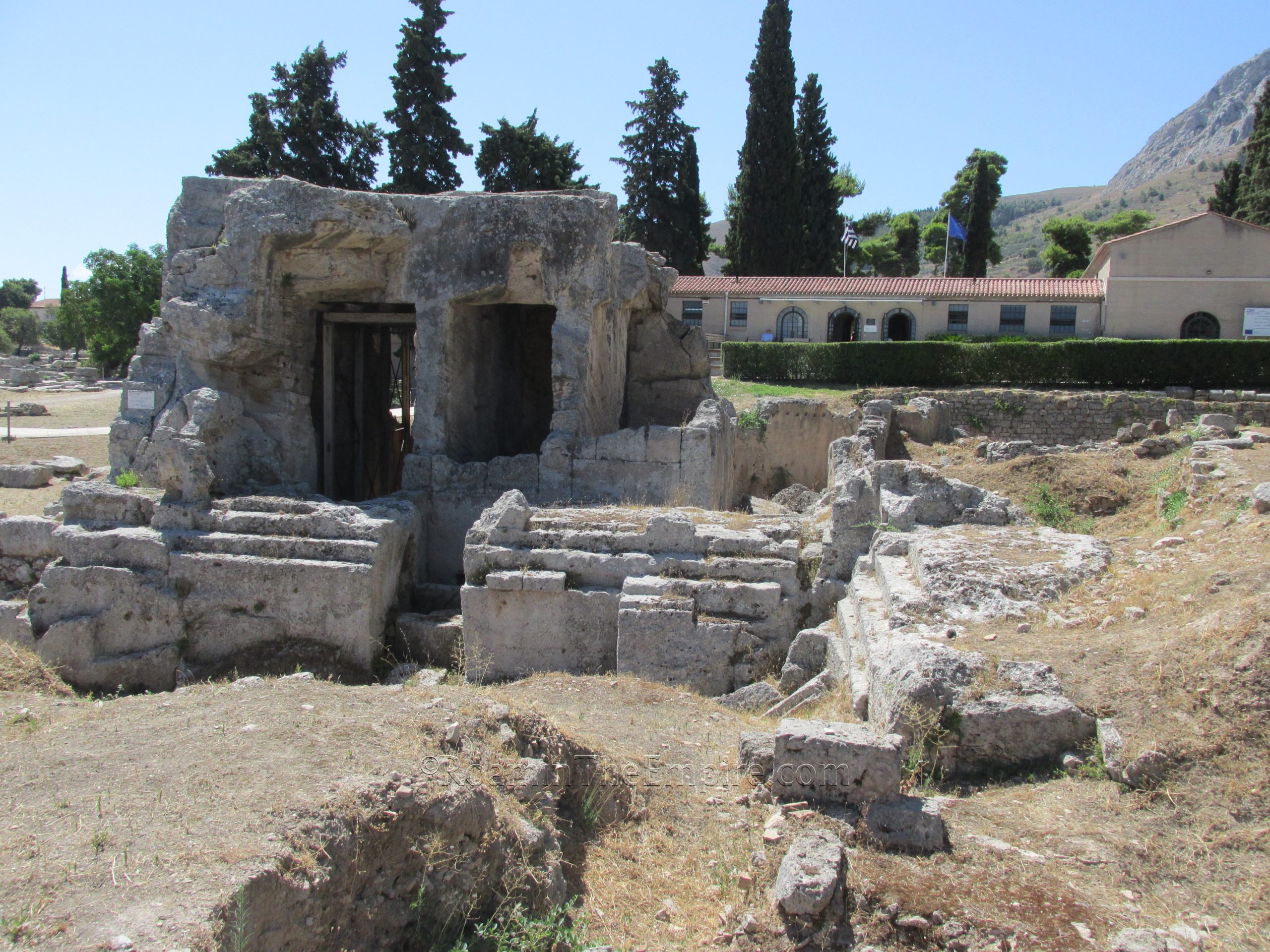
The first monument encountered after entering the site is the Fountain of Glauke. The fountain matches a description provided by Pausanias that describes a well or fountain on the road out of the forum, on the approach to the odeon, as being named after Glauke. Glauke was the daughter of the king of Corinth, Creon, who caught the eye of Jason, who subsequently left his wife Medea for Glauke. Jealous and seeking revenge, Medea gave Glauke a gift of poisoned robes that burned when she put them on, and in trying (unsuccessfully) to stop the burning, she threw herself into the well that now bears her name.
The Fountain of Glauke, however, only seems to date back to the late Hellenistic or Roman period. The fountain itself is largely carved out of an outcropping of bedrock, rather than being constructed of building materials. It also was not fed by a natural spring, but instead had water piped to the location. The courtyard on the north side of the fountain dates pretty definitively to the Roman period. Unfortunately, one can’t approach the fountain too closely, but it’s still fairly impressive from a distance.
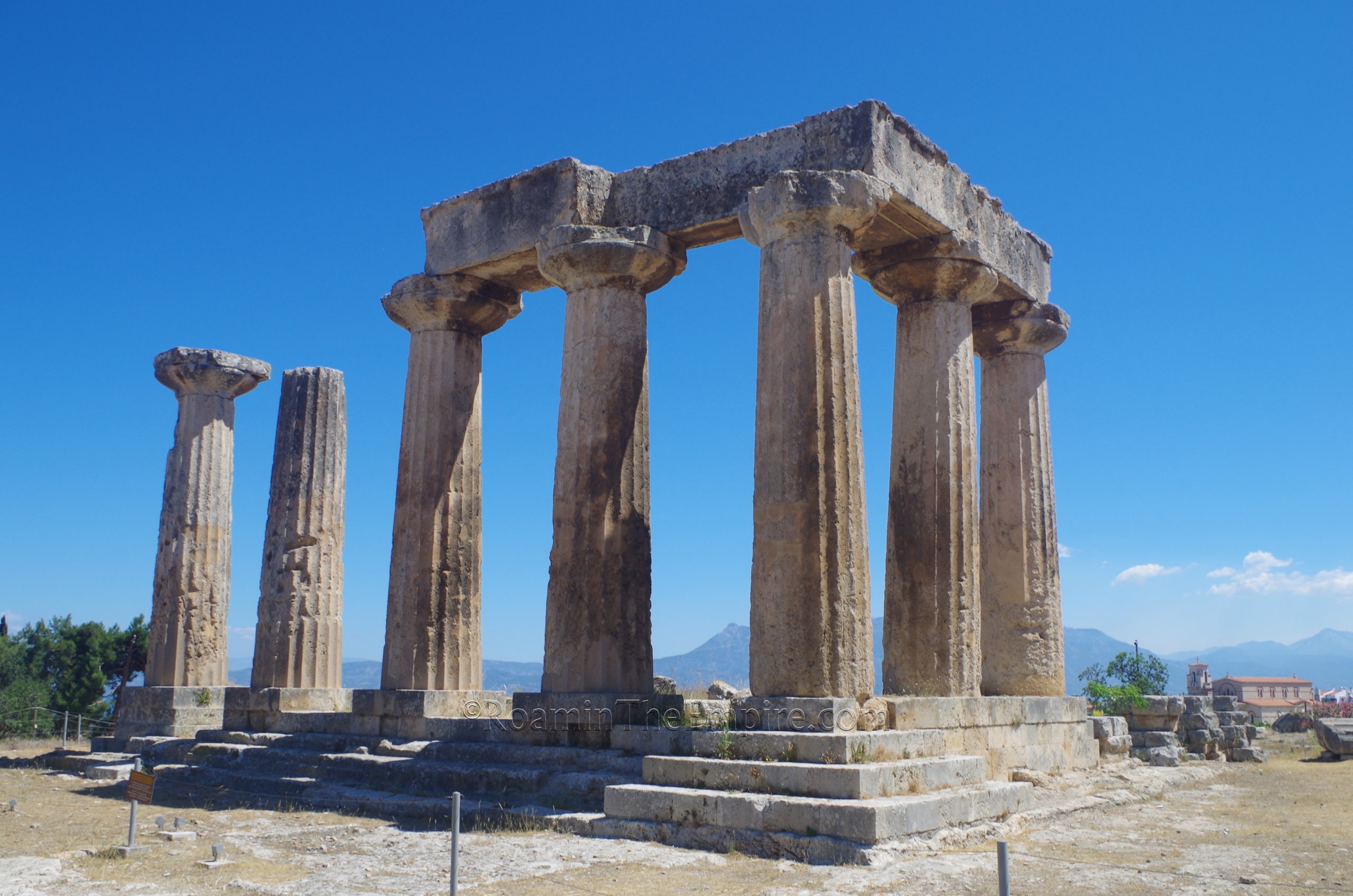
Adjacent to the Fountain of Glauke on the southeast side are some remnants of the precinct of what is defined as Temple C. Not much remains of the temple except some fragments of the surrounding portico and the podium. The prostyle temple was constructed during the reign of Augustus, while the portico, which is constructed at a slightly askew orientation with relation to the temple, seems to have been constructed at a later point. The function or dedication of the temple has, thus far, not been determined.
Just to the northeast of that is perhaps the most famous monument at Corinth, the Temple of Apollo and its seven standing columns. Located atop a rise, the temple at this location in Corinth is described by Pausanias as being dedicated to Apollo, but some archaeological finds also seem to confirm this. A temple was constructed here in the 7th century BCE, but it was later dismantled and a new temple was erected in the 6th century BCE. The core of this temple seems to have survived the Roman destruction of the city to some degree, but after the re-foundation of the city underwent a drastic renovation that saw not only the temple itself being changed in significant ways (interior columns being removed and placed at the south stoa), but also the precinct around the temple being changed. The avenue of access to the temple was reorganized and quarrying was carried out on parts of the hill on which the temple stands.
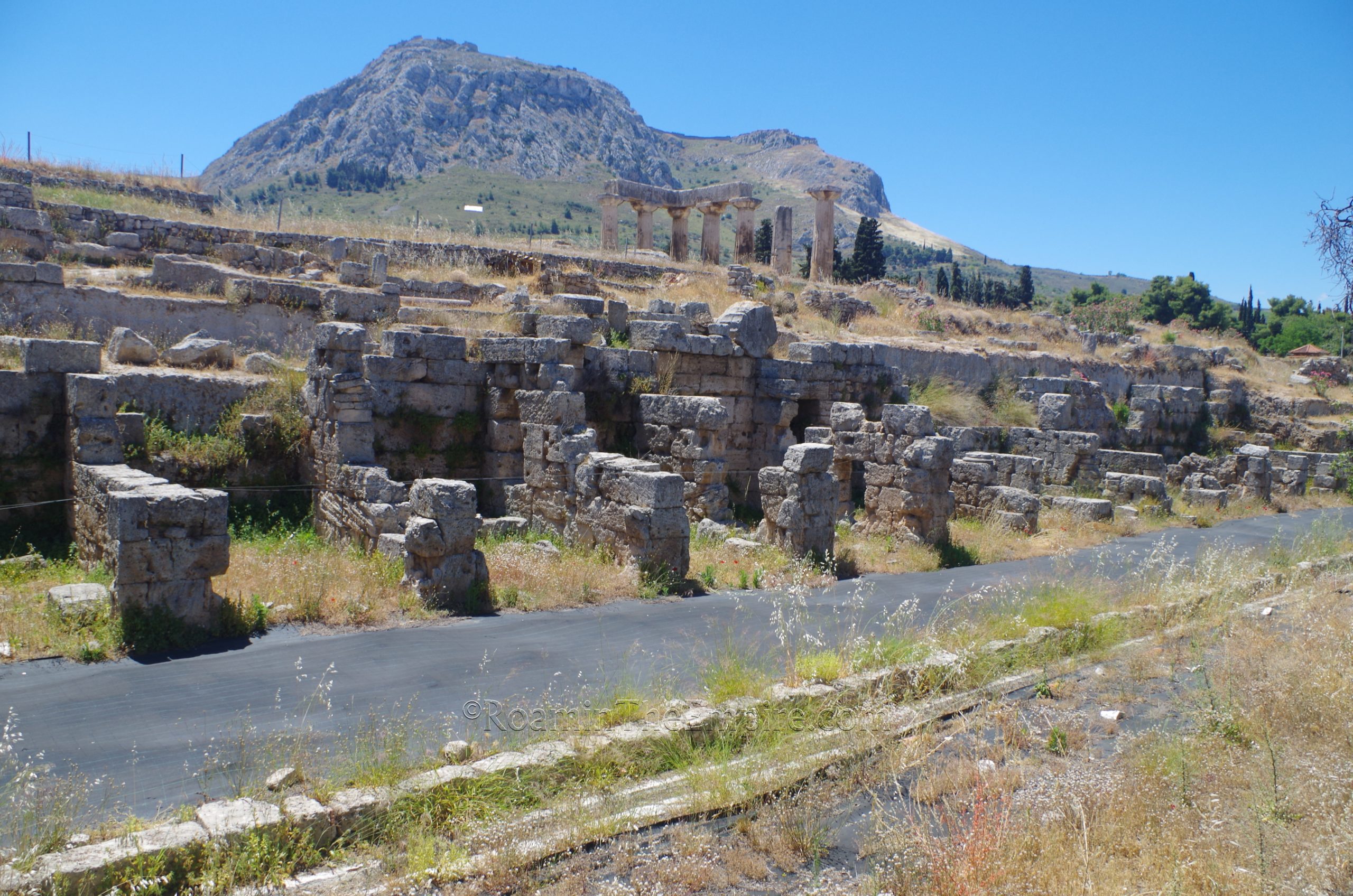
Just to the north of the Temple of Apollo, but not really very well visible from the inside of the archaeological park, are a number of stalls associated with the southern portico of the north market. This construction dates to the Roman period. Some of the mosaic flooring between the shops and the interior courtyard of the portico remains, though it seems to typically be covered. The walls of the market stalls are fairly robust and are preserved to a decent height. It’s best to actually view the north market from the road outside the site, Apollonos Street. It seems like it’s usually pretty well kept and visible, though sometimes the overgrowth is a little more than others. But generally it is still pretty visible.
In the same area, overlaid by part of the north market, is the earlier north stoa, probably dating to about the 4th century BCE. Interestingly, some remains of this are visible west of the north market, at a higher level than the ground level of the north market; evidence of the cuts into the hill made by the Romans. Like the north market, the north stoa remains are best viewed from outside the park, as the access is in this part of the site is only available along a set path up to the Temple of Apollo, and does not allow a close approach to the north market or north stoa.
Sources:
Engles, Donald. Roman Corinth: An Alternative Model for the Classical City. Chicago: The University of Chicago Press, 1990.
Grant, Michael. A Guide to the Ancient World: A Dictionary of Classical Place Names. New York: Barnes & Noble Books, 1997
Livy. Periochae, 52.1-6.
Pausanias. Hellados Periegesis, 2.1-5, 2.8-9.
Polybius. Historiai, 23.9.
Sanders, Guy D. R., et al. Ancient Corinth: Site Guide. Princeton, NJ: American School of Classical Studies, 2018.
Schowalter, Daniel N. and Steven J. Friesen (eds.). Urban Religion in Roman Corinth: Interdisciplinary Approaches. Cambridge: Harvard Theological Studies, 2005.
Shipley, Graham. The Greek World After Alexander: 323-30 BC. London: Routledge, 2000.
Smith, William. Dictionary of Greek and Roman Geography. Walton & Murray, 1870.



Thanks, it was an enjoyable read.
Fyi, Corinth is not part of Achaea, it’s in the corinthia
Thank you for the feedback! I’m using the Roman provincial designation for the area (circa mid-2nd century CE), rather than the modern regional units.